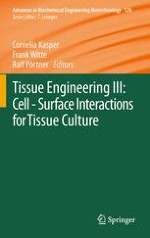2012 | OriginalPaper | Chapter
Artificial Scaffolds and Mesenchymal Stem Cells for Hard Tissues
Authors : Margit Schulze, Edda Tobiasch
Published in: Tissue Engineering III: Cell - Surface Interactions for Tissue Culture
Publisher: Springer Berlin Heidelberg
Activate our intelligent search to find suitable subject content or patents.
Select sections of text to find matching patents with Artificial Intelligence. powered by
Select sections of text to find additional relevant content using AI-assisted search. powered by
